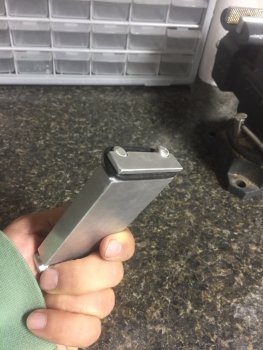Mark Barone
Well-Known Member
Being a beginner and having limited tools, what is the lowest grit level that is acceptable on a bevel? ...
pre sharpening the secondary bevel. Having limited tools and experience a mirror finish may be lighyears away for me. Also vertical versus horizontal grind lines. Is there a function?
pre sharpening the secondary bevel. Having limited tools and experience a mirror finish may be lighyears away for me. Also vertical versus horizontal grind lines. Is there a function?


